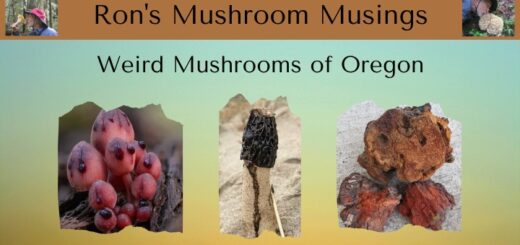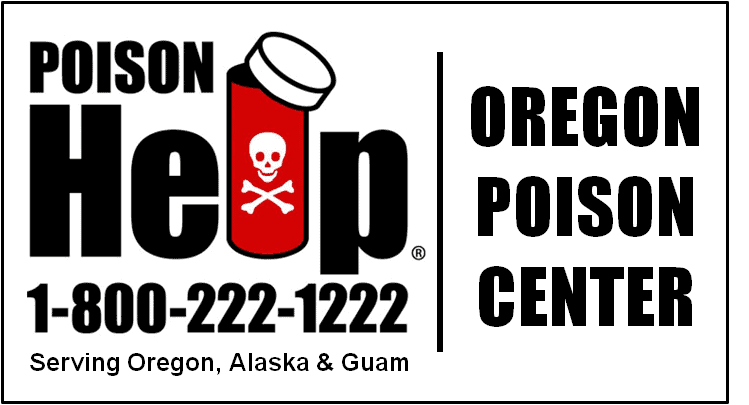What is that odor?
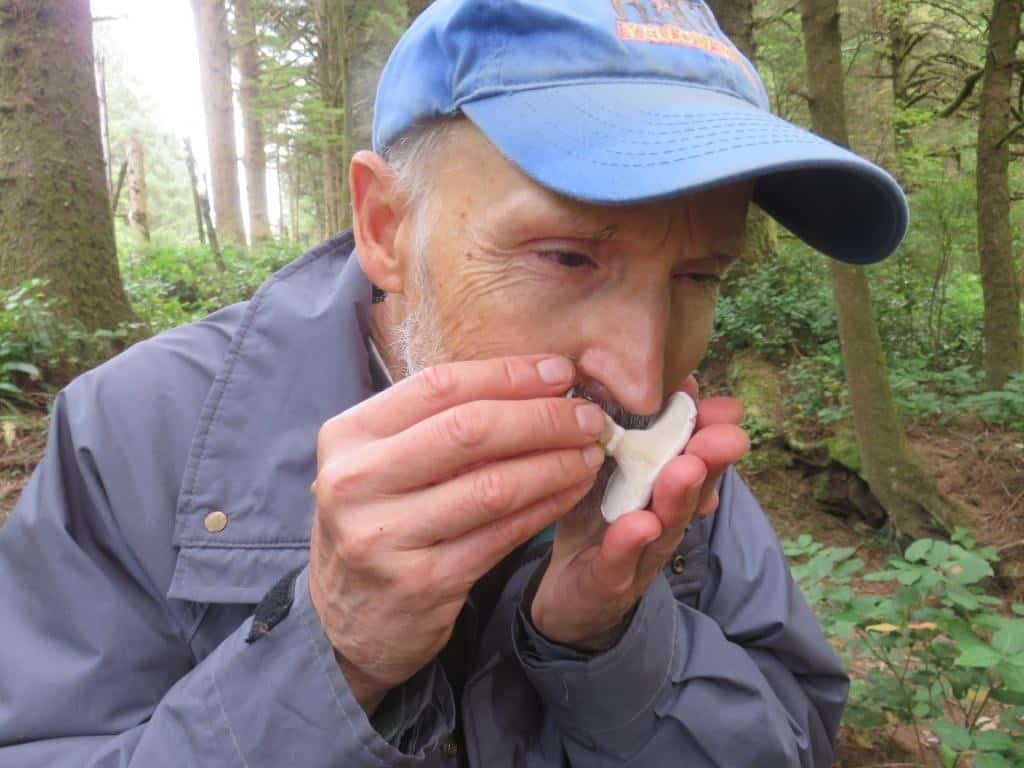
Fall mushroom season brings on a multitude of mushrooms with varying shapes, colors, sizes, and interesting peculiarities. We use each of these characteristics to help identify exactly what we are looking at or at least narrow the playing field. However, early on in our mushroom hunting career, Sandy and I were lucky to pair up with some very knowledgeable people in our quest for knowledge. Each person had their favorite area of interest or preferred category of fungus types. I especially recall one mentor that was obsessed with a mushroom’s odor. I won’t mention Marcia Peeters by name, but I can’t tell you how many times a mushroom was popped in front of my nose followed by the phrase “smell this”. And while I later found out that all mushrooms don’t smell like dirty diapers, the ones dangled in front of my nose certainly did. I guess in hindsight those species did create the most dramatic response and taught me to run when I heard “smell this”. It was a lesson that resulted in some personal abuse of my olfactory sensory system but in some perverse way was quite instructional. I had never really considered using odor as a discriminator and as I found out there are quite a few with very interesting and thankfully, pleasant aromas.
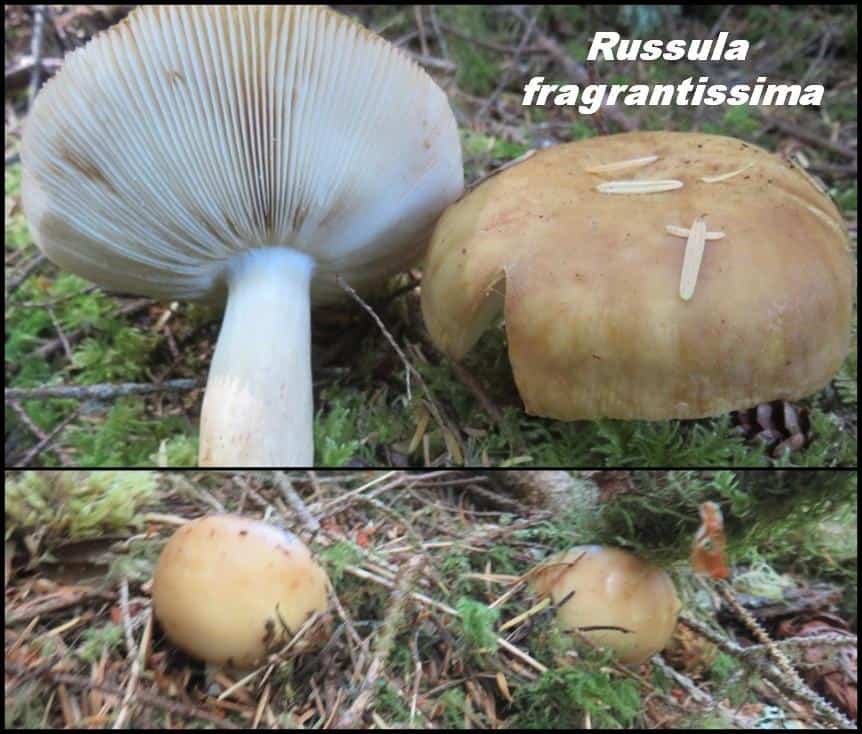
I’ve come to find the process of decoding aromas much like that of sniffing a glass of wine or putting your nose into your pint of beer. While you may not have “notes of cherry blossom”, or “a lingering taste of citrus on the pallet” type reactions, you will certainly find mushroom species with very discernible aromas. Some of the more appealing ones are almond, anise, radish, fenugreek, and green corn. And as I can attest there are also those with the not so pleasant smells of aging crab, bleach, rotten cabbage, and my least favorite, dirty diapers. In addition, there are those mushrooms like Russula fragrantissima (The fragrant Russula) that start out with a very nice aroma of almonds or maraschino cherries but later in life takes on a very foul odor worthy of Marcia’s interest. Considered inedible, Russula fragrantissima is quite plentiful at the coast right now.
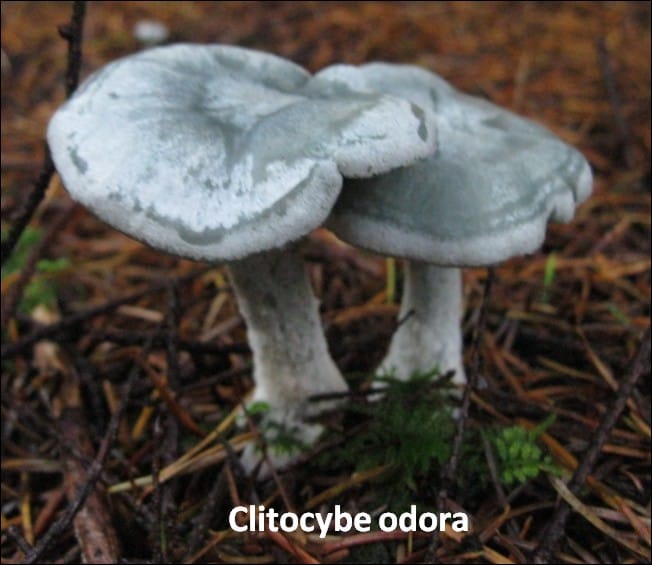
These aromas while very telling are unfortunately not unique to a single species of mushroom. The much more difficult to find Agaricus augustus (The Prince) also emits the aroma of almonds but unlike Russula fragrantissima is considered a choice edible. One of my favorite mushroom species to walk around smelling is Clitocybe odora (The Aniseed Funnel Cap, or, The Anise Mushroom) with its wonderful fragrance of, well you guessed it, anise. Some describe the aroma of anise as a mild form of sweet licorice but however you describe it the mushroom smells wonderful and tastes much like it smells. While Clitocybe odora is perfectly edible as a cooked mushroom, it is often used to infuse its flavor into neutral distilled beverage like Gin or Vodka and as a flavoring in cookies and bread.
If you like the smell of radishes you will really like smelling Hebeloma crustuliniforme (Poison Pie). Its common name of Poison Pie stems from the fact that it is poisonous, causing gastrointestinal distress, and the cap color is reminiscent of pie crust. The aroma is easily distinguishable as being very radish like in a pleasant way. Hebeloma crustuliniforme is quite plentiful in the fall and can be found in large groups in wooded areas as well as tree laden lawns and somewhat appropriately in cemeteries.
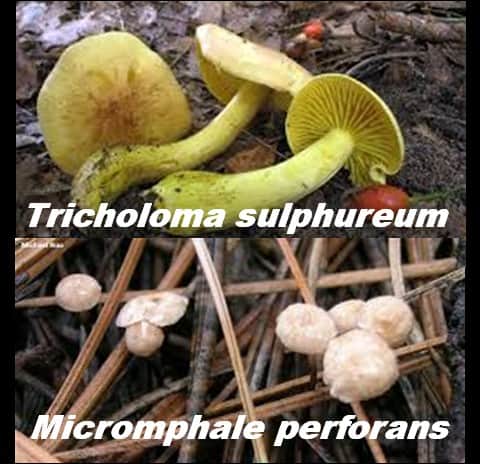
Now to the dark side of mushroom aromas and Micromphale perforans (The Stinking Parachute), which exudes the ever popular aroma of rotten cabbage or broccoli gone bad. I have no doubt this was one of the “smell this” group of mushrooms that was part of my olfactory training. Although it is one of the more dainty mushrooms reminiscent of the genus Marasmius, it packs a powerful punch when it comes to odor. It is typically found on conifer litter and mostly occurs in groups. Another in the not so favorable odor category is Tricholoma sulphureum (The Stinker, or, Sulfur Knight) which exudes an aroma similar to coal gas. I’m not exactly certain what coal gas smells like; however, David Arora defines the aroma of this stately mushroom simple as “smells obnoxious”. I like people who get right to the point. Although it is an attractive mushroom with sulfur yellow coloring and that stately Tricholoma stature, it is considered poisonous and I would say far to smelly to eat anyway.
While these few species of mushrooms only crest the tip of the iceberg of total aromas that have been defined, it should encourage everyone to stop, look, and sniff. Some species transmit their odoriferous characteristic freely while others need to be coaxed using the “scratch and sniff” method. You may also have to become more brutal and crush the mushroom to release its aroma. Sometimes certain portions of a mushroom will exude an aroma while other parts will not. The edge of the cap, the stem, and especially the base of the stem are all good places to check. If you can’t detect an aroma just remember there are many species of mushrooms that do not possess any special aroma attributes. Many are simple described as smelling earthy or foresty. I should also state that it is perfectly safe to smell a mushroom that is in good condition. Rotting or rotten mushrooms should be avoided since all decomposing mushrooms fall into the smelling bad category.
References:
AmericanMushrooms.com, Things that Smell – www.americanmushrooms.com/odors.htm
MushroomExpert.com, Determing Odor and Taste – www.mushroomexpert.com/odortaste.html
Sore Prints, Bulletin of the Puget Sound Mycological Society – www.psms.org/sporeprints/SP457.pdf (see article on “Mushrooms That Smell Like Garlic & Onions”)



